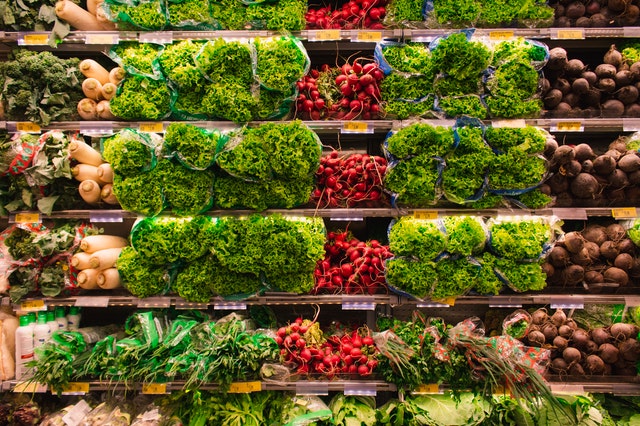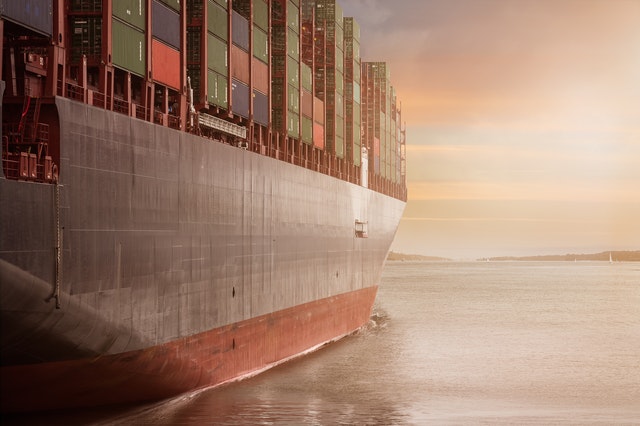COVID-19 is now an official global pandemic. Soon we’re going to see official pandemic merchandise. If anyone does start producing that, we thought of it first.
Now, with cases showing up in all forty-eight contiguous states in the U.S. the fear, the problems, and the questions have been brought directly home.
As the virus spreads we are being given a much clearer, much more stark view of its far-reaching effects. The progress of this virus is causing profit warnings, store closures and credit defaults among companies that are reliant on China’s mammoth consumptive power. Many businesses have shuttered for the time being or maybe even for good. There are a few bright spots in this time of virus.
ecommerce
While other businesses, restaurants, bars, theaters are closing or going on hiatus, the virus has inadvertently caused a boom for ecommerce. As people are staying home in hopes of preventing the spreading of the disease, online buying has skyrocketed.
Online grocery shopping has become quite popular. Although most people, even in crisis, tend to do their grocery shopping at brick and mortar stores, seeing it as their chance for a bit of normalcy, for social interaction, the rules handed to us by COVID-19 are making people change their usual patterns.
The big players, Amazon, Walmart, and Kroger will, of course, be the big winners in the billion-dollar online grocery business, as they have set up for it years ago. But, as the virus spreads there is still money to be made in the online grocery business.
According to eMarket, U.S. food and beverage ecommerce sales will reach $38.16 billion by 2023. That’s nearly double what we saw in 2019.
Pre-made meals, meal plans, individual shopping lists, and specialty grocery shops can still and, if they are smart, will cash in on this change and make some money in the coming months and perhaps years to come.
Not just groceries

Sure people are getting their canned goods and meals online but that’s not the limit of this odd, virus-based, financial boom.
In February of 2020, a Coresight Research survey found that 58% of internet users said they would avoid public places, shopping malls, grocery stores and the like if the virus gets worse. Well, it has gotten worse and the survey has proved correct.
The online shopping business is booming and shoppers are even willing to buy the products they need or, let’s face it, just want, with longer delivery windows just to avoid going to stores and being among crowds.
Medical supplies like face masks, hand sanitizers, thermometers, and other first-aid supplies are in high demand. As are items that people want to help them get through the long days, weeks or even months of quarantine.
Not all great
If you have a business and you’re looking at the lay of the land and thinking now is the time to drop some serious dough on an ecommerce plan, hold on just a second. It’s not all roses in Picardy. There are problems to deal with for ecommerce purveyors as well.
Side note, since we’re using the term quite a bit and it will be used quite a bit by us in the future, here’s a little information on the spelling of the term ecommerce.
Now back to our regularly scheduled blog, already in progress.
With the popularity and, in some cases, the necessity of online shopping comes a new set of problems. Digital advertisers and online retailers are struggling to handle the logistical bottleneck problems and product shortages caused by this virus.
The surge in online orders has added to the pressure to fulfill orders. For some businesses, this added pressure has threatened to upend the business completely.
Companies like Proctor & Gamble have told their shareholders that the virus has put increasing and almost impossible pressure on their ecommerce business. While the demand for products is there, the supply of them just isn’t.
Weak supply chains
As the virus gets worse and its reach increases, many companies are dealing with the fact that there are major weaknesses in their supply chains.
In March of 2011, the earthquake and tsunami that rocked Fukushima, Japan was a wake-up call for many multinationals. They were taught a hard lesson about weaknesses in their supply chains. While most were able to assess the impact Fukushima had on their direct suppliers, many were hamstrung by the impacts on their second-and third-tier suppliers in the affected region.
Almost a decade later and it appears the lessons of Fukushima need to be learned all over again. This time the instructor is a different kind of natural disaster. This time, manufacturers are scrambling to discover which of the “invisible” lower-tier suppliers, the ones they don’t directly deal with, are in major quarantine areas.
Many companies are probably now regretting their choice to rely on a single company for items they directly purchase. Supply chain managers have always known the risks of single-sourcing, still, they continue to do it in order to secure their supply and meet cost targets.
The choice to single-source often limits their geographical choices and that limitation usually leaves them only with China.
Moving ahead

On March 11 a container ship from China arrived at the Port of Los Angeles. It was like one of the battleships returning home from the WWII Pacific theater. People were overjoyed. It was the first container ship to arrive in 10 days. Although this was a welcome sign to businesses, the threat to global supply chains isn’t over just yet.
Philip Palin is a supply chain resilience author and researcher. He was one of a panel of experts assembled to speak to suppliers, businesses and ecommerce companies at a seminar sponsored by the American Logistics Aid Network (ALAN), in Atlanta, Georgia. To mitigate future supply chain risks, Palin and his peers offered some suggestions on moving forward.
Understand supply and demand risks.
China represents 30% of global manufacturing and 51,000 companies globally have tier-one suppliers located in China. Now that the virus has hit hard in other logistical back-up countries like Italy and Germany, even more impact has been leveled on the supply chain.
This virus is showing companies that, unlike a supply risk, which supply chain managers can monitor and measure through close communications with their vendors, demand risk has no geographical constraints, making them more difficult to predict. This unpredictability challenges retailers and logistics companies. Palin and experts like him have one suggestion … have a plan.
Map the supply chain
Understanding the location and status of various nodes of the supply chain is vital. Mapping the supply chain will give executives visibility up several tiers of suppliers as well as the logistics between these suppliers.
Successful mapping often relies on hyperlocal information and requires data and information sharing between partners.
Mapping allows companies to know where inventory is, including at the distribution level. With a well-drawn map, managers can pinpoint a precise source of disruption and assess how to react accordingly.
Plan “what if” scenarios
With data and maps to paint a specific picture, executives can start to formulate “what if” plans and work to stay ahead of problems that suddenly arise, like the current COVID-19 virus.
With the proper information, executives can and must engage in specific, step-by-step scenario planning. This idea of service planning isn’t just good for situations like the current pandemic, it is also a smart idea for everyday operations. Plan for everything so that you can react to specifics.
From now on…
There is really no concrete way to finish that sentence. But that uncertainty isn’t a cause for panic. China is sending container ships out once again, the level of cases in Wuhan, China, the epicenter of the virus, have leveled off and people are looking to things going back to normal. But, anyone who has lived through a natural disaster will tell you, normal is a fluid term and we have to wait and see how normal will be defined once the dust clears. What we do know, from past experience, is that we will survive and we will thrive with guidance, clear heads, and well planned next steps.
Normal is going to mean a smart, well thought out revamp of the usual supply and demand methods, a re-examination of old ways and some calm rethinking as to how companies will proceed in the future. The rise of ecommerce during this pandemic is one bright lesson in the rest of the unsure darkness.
An Agile Touch
While it’s not good to revel in economic schadenfreude, it may be time to up your company’s ecommerce game and see where you can take your business.
However, before you do that, take time to find a reliable, knowledgeable and trustworthy supply chain company. A company that understands the business, has solutions and can guide you to higher peaks.
Now, more than ever, a strong SCS company is going to be the make or break element for your ecommerce business. A company with connections, ecommerce knowledge, and an agile touch when it comes to navigating the increasingly challenging world of supply chain management.
So, before you attempt to cash in on the current ecommerce explosion visit us here at Agile SCS, let us help you make the most out of the current possibilities.




